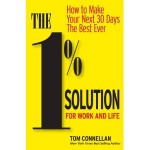Last week I was sitting in a board meeting for my local SHRM Chapter (NASHRM). I’ve been on the board for about five years now in various roles, and it’s a great way to get connected and serve others within the profession. But volunteering in that capacity is not what we’re discussing today. There was a point in the conversation where we were talking about our upcoming Mentor University program, and someone asked what the minimum threshold should be for mentors in the program. Someone threw out ten years as a baseline, and there was an immediate reaction from some of my friends on the board.
“What? Just ten years? We have ten years of experience and still feel like we don’t have much to offer.”
I had to laugh. First, because one of these self-professed not-quite-mentors is a good friend that speaks often in front of large crowds. She is a subject matter expert on recruiting, staffing, and managing candidate relationships. I have plenty of hands-on recruiting experience, but when she talks, I listen. So that seems funny to think that she can teach groups of senior level HR pros and recruiters about strategy and tactics but doesn’t have the capability (supposedly) to work in an informal one-on-one relationship with someone less experienced.
Secondly, everyone has something to offer. You do. Yes, you.
- If you have twenty years of experience, that HR generalist with ten years under his belt can learn something from you.
- If you have ten years of experience as a specialist in some area, the junior HR pro with a few years on the front lines can pick up a few tips and tricks you’ve learned.
- If you have a week of experience as an HR pro of any sort, you have insights to offer someone who is just making steps to pursue an HR career.
See? You do, really.
I think in the end we dropped the ten year experience requirement on the mentors because it is artificial, and it doesn’t tell us what we want to know. When I am speaking on retention and the link to professional development, I often throw out the example of having ten years of experience. There are two ways to get to the ten year mark:
- Do the same basic tasks over and over again all year long, and then do it for ten years, never learning and growing beyond those basic functions.
- Master your basic tasks and then begin adding complexity and depth to your responsibilities, growing year after year progressively until you have a solid block of ten years behind you.
I want to be the second one here, and I want to find more of them in my daily work, because those are the people you can learn and grow from.
This week I’ll be in Florida for the Brandon Hall Group Excellence Conference. Wednesday I’ll be copresenting a workshop on the changing learning environment and how to integrate informal/experiential learning into your formal training programs. Friday I will be working in two sessions–the first on the changes we’re seeing in learning and development technology and the second focuses on the research linking human capital management technology and bottom-line business results. It’s going to be busy and fun. Am I the world’s foremost expert in these topics? No, but I do have something to offer. Insights from dozens of vendor briefings and discussions, data from our research, and practical experience from the trenches are all rolled together into one delivery that will help the audience learn and grow.
Think about yourself this week. Whether you’re volunteering through a local chapter or just finding a way to help someone else that needs it, you do have something to offer. Don’t let your own thoughts or anyone else tell you differently.
 Last week I was talking with some folks about using compensation to drive employee behavior, and it occurred to me that I have never shared anything about that topic here. While I might not be the world’s foremost expert on the topic, I do have a few basic principles that I have relied on over time. The thing that I would like to note is that these apply to organizations of virtually any size. Even small companies (I’m looking at you, Mr/Ms HR Manager of a company with less than 250 employees) can incorporate these elements into their compensation planning without too much stress.
Last week I was talking with some folks about using compensation to drive employee behavior, and it occurred to me that I have never shared anything about that topic here. While I might not be the world’s foremost expert on the topic, I do have a few basic principles that I have relied on over time. The thing that I would like to note is that these apply to organizations of virtually any size. Even small companies (I’m looking at you, Mr/Ms HR Manager of a company with less than 250 employees) can incorporate these elements into their compensation planning without too much stress.
